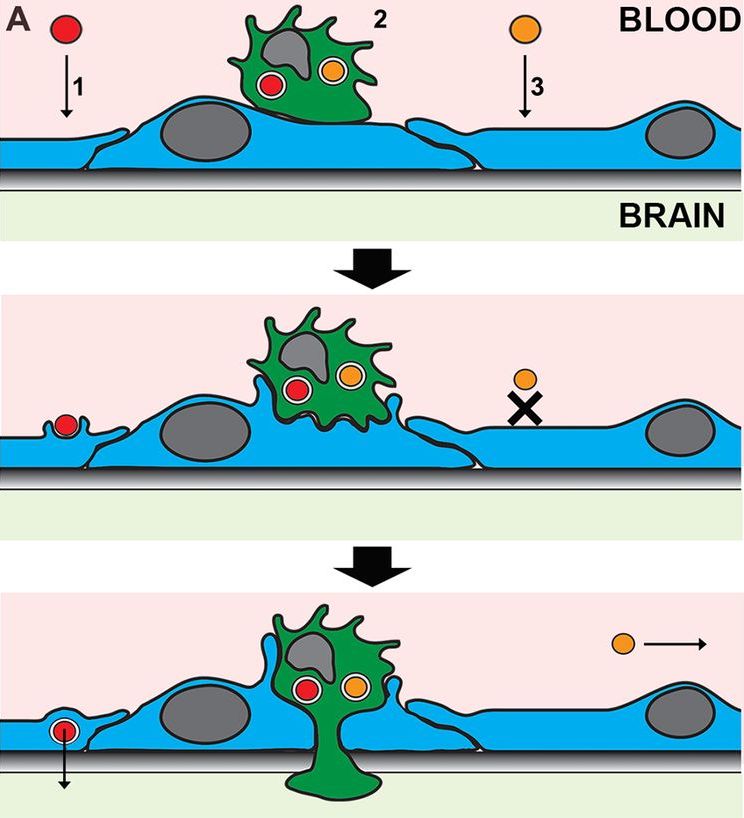The body's organs are fed by blood, which provides nutrients in exchange for waste products from cells. This free exchange of goods and services, however, is dangerous for the brain, primarily for two reasons.
First, the brain is under tight metabolic control. If ions and other substances had easy access to the brain, neurons would not work properly. Second, if there wasn't an extra layer of protection, nasty microbes could gain access. To prevent both of these unpleasant outcomes, the brain is protected by a special wall, called the blood-brain barrier (BBB), that tightly regulates what goes in and out of the brain.
Despite this extra security, some pathogens still get in. One of them is called Cryptococcus neoformans, a fungus that can be found in the excrement of flying tree rats, like pigeons and bats. After being inhaled into the lungs, the fungus makes its way into the brain and causes meningoencephalitis, which kills 600,000 people every year, mainly the immunocompromised (such as patients with HIV). And one way it accesses the brain is through a clever "Trojan horse" mechanism.
Researchers built an in vitro BBB model. The top side represents the blood side, and the bottom side represents the brain side. (See panel A in the figure below.) On the top side, human brain blood vessel cells (stained blue) were grown. Then, the authors placed monocytes (a type of immune cell, stained green) that were infected with Cryptococcus (stained red) on top of them. Using microscopy, they observed the monocytes crawling their way through the blood vessel cells, from the top side to the bottom side.

The monocytes did not come alone. As shown (both in the cartoon image in panel A and in the micrographs in panels B and C), the fungi they were infected with hitched a ride with them. In other words, Cryptococcus successfully used the monocytes as a Trojan horse to sneak into the brain side of the BBB model.
 Other experiments the team performed revealed that Cryptococcus can cross the blood-brain barrier without the help of monocytes. However, if the fungus is mutated in such a way that it cannot cross the BBB by itself, the mutants can still hitch a ride with monocytes. (See image on right. Red cells depict healthy Cryptococcus, which can cross the BBB by itself or inside of a monocyte; orange cells depict mutated Cryptococcus, which can only cross the BBB by using a monocyte as a Trojan horse.)
Other experiments the team performed revealed that Cryptococcus can cross the blood-brain barrier without the help of monocytes. However, if the fungus is mutated in such a way that it cannot cross the BBB by itself, the mutants can still hitch a ride with monocytes. (See image on right. Red cells depict healthy Cryptococcus, which can cross the BBB by itself or inside of a monocyte; orange cells depict mutated Cryptococcus, which can only cross the BBB by using a monocyte as a Trojan horse.)
No matter how clever your body's natural defenses, cleverer microbes can usually find a way in.
Source: Felipe H. Santiago-Tirado, Michael D. Onken, John A. Cooper, Robyn S. Klein, Tamara L. Doering. "Trojan Horse Transit Contributes to Blood-Brain Barrier Crossing of a Eukaryotic Pathogen." mBio 8(1): e02183-16. Published: 31-January-2017. doi: 10.1128/mBio.02183-16




